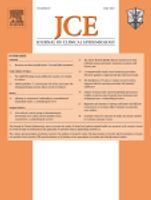
The distribution of P-values in medical research articles suggested selective reporting associated with statistical significance - ScienceDirect
Most medical research studies, regardless of design or purpose, report results accompanied by P-values or by confidence intervals [1]. The aggregate population of published P-values (or confidence intervals) can be seen as a collective artifact of the medical research enterprise that may reveal ... Most medical research studies, regardless of design or purpose, report results accompanied by P-values or by confidence intervals [1]. The aggregate population of published P-values (or confidence intervals) can be seen as a collective artifact of the medical research enterprise that may reveal useful clues about the conduct of science and the dissemination of scientific results.Recent studies found an unusually high occurrence of P-values just below the threshold of statistical significance [5], [6], [7]. For example, in abstracts that reported results as odds ratios or relative risks, Gøtzsche found 46 P-values between 0.0400 and 0.0499, but only five between 0.0500 and 0.0599 [5]; which would be highly unlikely without selection bias.We screened 149 articles that contained numerical results and retained 120 articles. Twenty-nine articles were excluded because they included P-values only as inequalities (<0.05 vs. ≥0.05, N = 2), only confidence intervals (N = 19), or did not report inference methods (N = 8).P. Gøtzsche ... E.J. Masicampo et al. ... B. Ginsel et al. ... L.R. Jager et al. ... Y. Benjamini et al. ... These were not often carried out and/or reported appropriately, potentially resulting in exaggerated treatment effects.29,36,37 Signs of selective reporting, identified as a common issue in RCTs published in leading medical journals,38 was prevalent in our sample.








